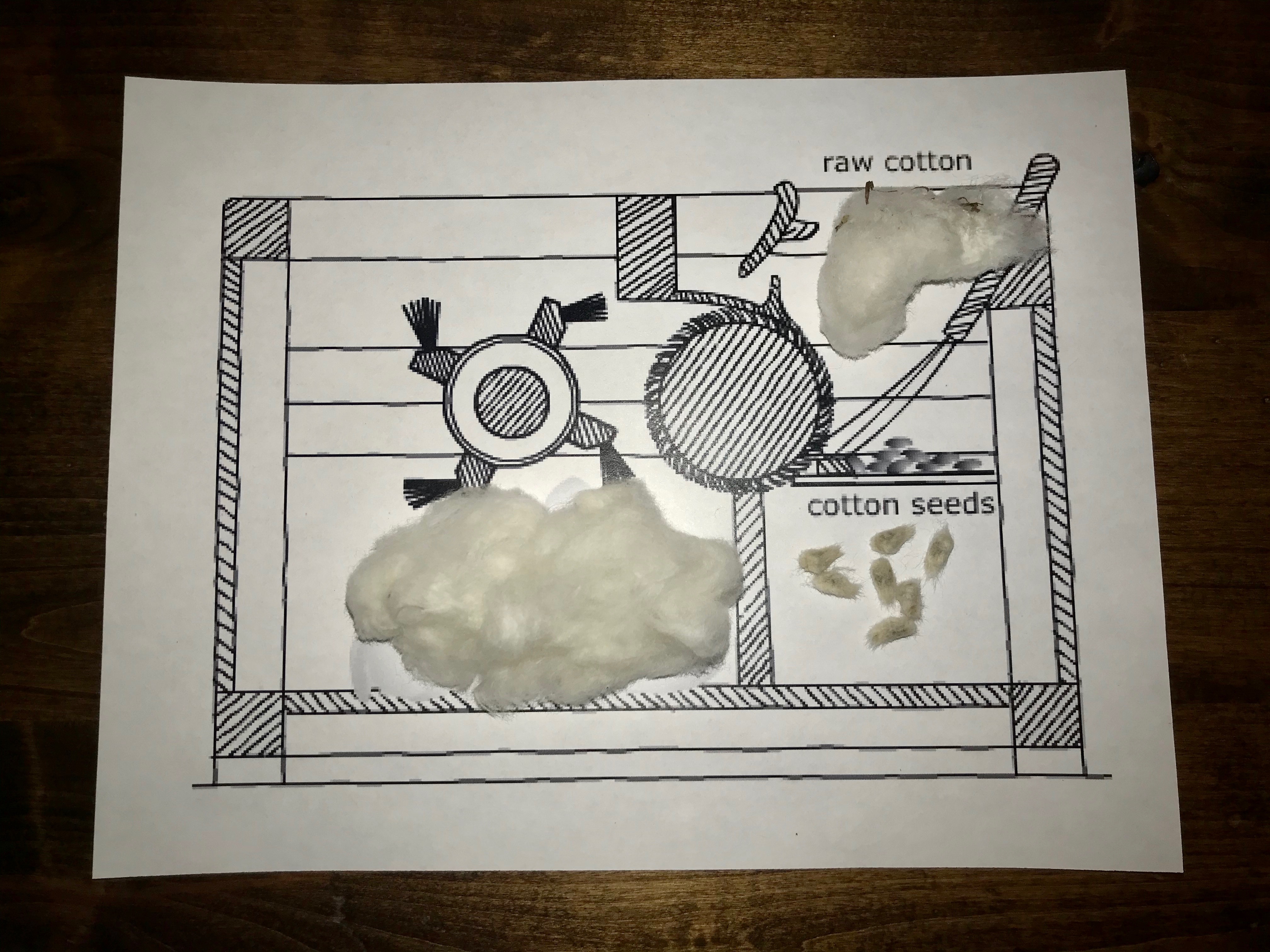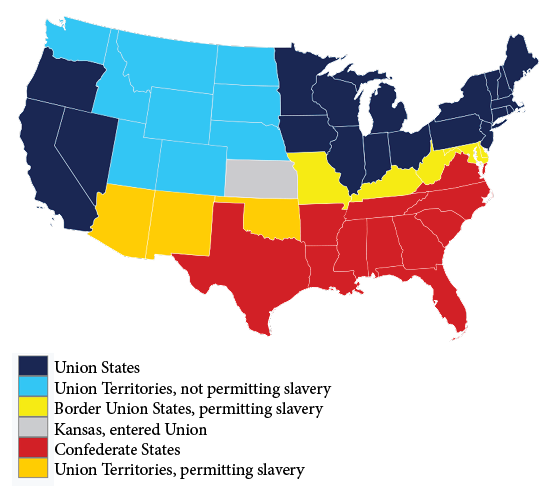Cotton's American Journey (Grades 3-5)
Students investigate the impact of cotton on the history and culture of the United States.

Background
Lesson Activities
Recommended Companion Resources
Credits
Author
Debra Spielmaker, Rose Judd-Murray, and Lynn Wallin | National Center for Agricultural Literacy (NCAL)
Acknowledgements
- Statistics and graphics from the National Cotton Council's Cotton Counts educational materials.
- Paul Smith, Ex-Slave Federal Writer's Project full interview https://www.loc.gov/resource/mesn.043/?sp=325
Sources
- https://www.asanet.org/sites/default/files/savvy/documents/students/docs/FINAL%20C3%20Fact%20Sheet%209-13-13-1.pdf
- https://www.nationalgeographic.org/encyclopedia/plantation-system/
Standards
Texas Content Area Standards
-
ELA: 3.110.5.b.6
Comprehension skills: listening speaking, reading, writing and thinking using multiple texts. The student uses metacognitive skills to both develop and deepen comprehension of increasingly complex texts.
- ELA: 3.6.G: The student is expected to evaluate details read to determine key ideas.
- ELA: 3.6.H: The student is expected to synthesize information to create new understanding.
- ELA: 3.110.5.b.6.G: evaluate details read to determine key ideas
-
ELA: 3.110.5.b.7
Response skills: listening, speaking, reading, writing, and thinking using multiple texts. The student responds to an increasingly challenging variety of sources that are read, heard, or viewed.
- ELA: 3.7.E: The student is expected to interact with sources in meaningful ways such as notetaking, annotating, freewriting, or illustrating.
-
ELA: 3.110.5.b.12
Composition: listening, speaking, reading, writing, and thinking using multiple texts- genres. The student uses genre characteristics and craft to compose multiple texts that are meaningful.
- ELA: 3.12.C: The student is expected to compose argumentative texts, including opinion essays, using genre characteristics and craft.
-
ELA: 4.110.6.b.1
Developing and sustaining foundational language skills: listening, speaking, discussion, and thinking- oral language. The students develops oral language through listening, speaking, and discussion.
- ELA: 4.1.D: The student is expected to work collaboratively with other to develop a plan of shared responsibilities.
- ELA: 4.110.6.b.1.D: work collaboratively with others to develop a plan of shared responsibilities
-
ELA: 4.110.6.b.6
Comprehension skills: listening, speaking, reading, writing and thinking using multiple texts. The student uses metacognitive skills to both develop and deepen comprehension of increasingly complex texts.
- ELA: 4.6.G: The student is expected to evaluate details read to determine key ideas.
- ELA: 4.6.H: The student is expected to synthesize information to create new understanding.
-
ELA: 4.110.6.b.7
Response skills: listening, speaking, reading, writing, and thinking using multiple texts. The student responds to an increasingly challenging variety of sources that are read, heard, or viewed.
- ELA: 4.7.E: The student is expected to interact with sources in meaningful ways such as notetaking, annotating, freewriting, or illustrating.
-
ELA: 4.110.6.b.12
Composition: listening, speaking, reading, writing, and thinking using multiple texts- genres. The student uses genre characteristics and craft to compose multiple texts that are meaningful.
- ELA: 4.12.C: The student is expected to compose argumentative texts, including opinion essays, using genre characteristics and craft.
-
ELA: 5.110.7.b.1
Developing and sustaining foundational language skills: listening, speaking, discussion, and thinking- oral language. The students develops oral language through listening, speaking, and discussion.
- ELA: 5.1.D: The student is expected to work collaboratively with others to develop a plan of shared responsibilities.
- ELA: 5.110.7.b.1.C: give an organized presentation employing eye contact, speaking rate, volume, enunciation, natural gestures, and conventions of language to communicate ideas effectively
- ELA: 5.110.7.b.1.D: work collaboratively with others to develop a plan of shared responsibilities
-
ELA: 5.110.7.b.6
Comprehension skills: listening, speaking, reading, writing, and thinking using multiple texts. The student uses metacognitive skills to both develop and deepen comprehension of increasingly complex texts.
- ELA: 5.6.G: The student is expected to evaluate details read to determine key ideas.
- ELA: 5.6.H: The student is expected to synthesize information to create new understanding.
-
ELA: 5.110.7.b.7
Response skills: listening, speaking, reading, writing, and thinking using multiple texts. The student responds to an increasingly challenging variety of sources that are read, heard, or viewed.
- ELA: 5.7.E: The student is expected to interact with sources in meaningful ways such as notetaking, annotating, freewriting, or illustrating.
-
ELA: 5.110.7.b.12
Composition: listening, speaking, reading, writing, and thinking using multiple texts -- genres. The student uses genre characteristics and craft to compose multiple texts that are meaningful.
- ELA: 5.12.C: The student is expected to compose argumentative texts, including opinion essays, using genre characteristics and craft.
-
Social Studies: 3.113.14.c.4
Geography. The student understands the concepts of location, distance, and direction on maps and globes. The student is expected to:
- Social Studies: 3.113.14.c.14.D: interpret and create visuals, including graphs, charts, tables, timelines, illustrations, and maps
-
ELA: 5.110.7.b.13
Inquiry and research: listening, speaking, reading, writing, and thinking using multiple texts. The student engages in both short-term and sustained recursive inquiry processes for a variety of purposes.
- ELA: 5.110.7.b.13.B: develop and follow a research plan with adult assistance
- ELA: 5.110.7.b.13.C: identify and gather relevant information from a variety of sources
- ELA: 5.110.7.b.13.E: demonstrate understanding of information gathered
- ELA: 5.110.7.b.13.H: use an appropriate mode of delivery, whether written, oral, or multimodal, to present results
-
Math: 3.111.5.b.7
Geometry and measurement. The student applies mathematical process standards to select appropriate units, strategies, and tools to solve problems involving customary and metric measurement.
- Math: 3.7.E: The student is expected to determine liquid volume (capacity) or weight using appropriate units and tools.
-
ELA: 8.110.24.b.1
Developing and sustaining foundational language skills: listening, speaking, discussion, and thinking- oral language. The student develops oral language through listening, speaking, and discussion.
- ELA: 8.110.24.b.1.D: participate collaboratively in discussions, plan agendas with clear goals and deadlines, set time limits for speakers, take notes, and vote on key issues
-
Social Studies: 3.113.14.c.14
Social studies skills. The student applies critical-thinking skills to organize and use information acquired from a variety of valid sources, including technology. The student is expected to:
- Social Studies: 3.113.14.c.14.C: interpret oral, visual, and print material by sequencing, categorizing, identifying the main idea, distinguishing between fact and opinion, identifying cause and effect, comparing, and contrasting
-
Social Studies: 3.113.14.c.15
Social studies skills. The student communicates in written, oral, and visual forms. The student is expected to:
- Social Studies: 3.113.14.c.15.D: express ideas orally based on knowledge and experiences
-
Social Studies: 3.113.14.c.16
Social studies skills. The student uses problem-solving and decision-making skills, working independently and with others. The student is expected to:
- Social Studies: 3.113.14.c.16.B: use problem-solving and decision-making processes to identify a problem, gather information, list and consider options, consider advantages and disadvantages, choose and implement a solution, and evaluate the effectiveness of the solution
-
Social Studies: 4.113.15.c.19
Social studies skills. The student applies critical-thinking skills to organize and use information acquired from a variety of valid sources, including technology. The student is expected to:
- Social Studies: 4.113.15.c.19.C: analyze information by applying absolute and relative chronology through sequencing, categorizing, identifying cause-and-effect relationships, comparing, contrasting, finding the main idea, summarizing, making generalizations and predictions, and drawing inferences and conclusions;
- Social Studies: 4.113.15.c.19.D: organize and interpret information in outlines, reports, databases, and visuals, including graphs, charts, timelines, and maps
-
Social Studies: 4.113.15.c.21
Social studies skills. The student communicates in written, oral, and visual forms. The student is expected to:
- Social Studies: 4.113.15.c.21.C: express ideas orally based on research and experiences
- Social Studies: 4.113.15.c.21.D: create written and visual material such as journal entries, reports, graphic organizers, outlines, and bibliographies
-
Social Studies: 4.113.15.c.22
Social studies skills. The student uses problem-solving and decision-making skills, working independently and with others. The student is expected to:
- Social Studies: 4.113.15.c.22.B: use problem-solving and decision-making processes to identify a problem, gather information, list and consider options, consider advantages and disadvantages, choose and implement a solution, and evaluate the effectiveness of the solution
-
Social Studies: 5.113.16.c.23
Social studies skills. The student applies critical-thinking skills to organize and use information acquired from a variety of valid sources, including technology. The student is expected to:
- Social Studies: 5.113.16.c.23.C: analyze information by applying absolute and relative chronology through sequencing, categorizing, identifying cause-and-effect relationships, comparing, contrasting, finding the main idea, summarizing, making generalizations and predictions, and drawing inferences and conclusions
- Social Studies: 5.113.16.c.23.D: organize and interpret information in outlines, reports, databases, and visuals, including graphs, charts, timelines, and maps
-
Social Studies: 5.113.16.c.25
Social studies skills. The student communicates in written, oral, and visual forms. The student is expected to:
- Social Studies: 5.113.16.c.25.C: express ideas orally based on research and experiences
- Social Studies: 5.113.16.c.25.D: create written and visual material such as journal entries, reports, graphic organizers, outlines, and bibliographies
-
Social Studies: 5.113.16.c.26
Social studies skills. The student uses problem-solving and decision-making skills, working independently and with others. The student is expected to:
- Social Studies: 5.113.16.c.26.B: use problem-solving and decision-making processes to identify a problem, gather information, list and consider options, consider advantages and disadvantages, choose and implement a solution, and evaluate the effectiveness of the solution
-
Science: 3.112.5.b.3
Scientific and engineering practices. The student develops evidence-based explanations and communicates findings, conclusions, and proposed solutions. The student is expected to:
- Science: 3.112.5.b.3.A: develop explanations and propose solutions supported by data and models
- Science: 3.112.5.b.3.B: communicate explanations and solutions individually and collaboratively in a variety of settings and formats
-
Science: 3.112.5.b.4
Scientific and engineering practices. The student knows the contributions of scientists and recognizes the importance of scientific research and innovation for society. The student is expected to:
- Science: 3.112.5.b.4.A: explain how scientific discoveries and innovative solutions to problems impact science and society
- Science: 3.112.5.b.4.B: research and explore resources such as museums, libraries, professional organizations, private companies, online platforms, and mentors employed in a science, technology, engineering, and mathematics (STEM) field to investigate STEM careers
-
Science: 4.112.6.b.4
Scientific and engineering practices. The student knows the contributions of scientists and recognizes the importance of scientific research and innovation for society. The student is expected to:
- Science: 4.112.6.b.4.A: explain how scientific discoveries and innovative solutions to problems impact science and society
- Science: 4.112.6.b.4.B: research and explore resources such as museums, libraries, professional organizations, private companies, online platforms, and mentors employed in a science, technology, engineering, and mathematics (STEM) field to investigate STEM careers
-
ELA: 3.110.5.b.1
Developing and sustaining foundational language skills: listening, speaking, discussion, and thinking--oral language. The student develops oral language through listening, speaking, and discussion. The student is expected to:
- ELA: 3.110.5.b.1.C: speak coherently about the topic under discussion, employing eye contact, speaking rate, volume, enunciation, and the conventions of language to communicate ideas effectively
- ELA: 3.110.5.b.1.D: work collaboratively with others by following agreed-upon rules, norms, and protocols
-
ELA: 3.110.5.b.13
Inquiry and research: listening, speaking, reading, writing, and thinking using multiple texts. The student engages in both short-term and sustained recursive inquiry processes for a variety of purposes. The student is expected to:
- ELA: 3.110.5.b.13.B: develop and follow a research plan with adult assistance
- ELA: 3.110.5.b.13.C: identify and gather relevant information from a variety of sources
- ELA: 3.110.5.b.13.E: demonstrate understanding of information gathered
- ELA: 3.110.5.b.13.H: use an appropriate mode of delivery, whether written, oral, or multimodal, to present results
-
ELA: 4.110.6.b.13
Inquiry and research: listening, speaking, reading, writing, and thinking using multiple texts. The student engages in both short-term and sustained recursive inquiry processes for a variety of purposes. The student is expected to:
- ELA: 4.110.6.b.13.B: develop and follow a research plan with adult assistance
- ELA: 4.110.6.b.13.C: identify and gather relevant information from a variety of sources
- ELA: 4.110.6.b.13.E: demonstrate understanding of information gathered
- ELA: 4.110.6.b.13.H: use an appropriate mode of delivery, whether written, oral, or multimodal, to present results
 onto a large screen. Give each student or group of students a cotton boll. Have the students examine the woody stem of the cotton boll. Explain to the students that the sharp plant material makes it very painful to pick cotton bolls by hand.
onto a large screen. Give each student or group of students a cotton boll. Have the students examine the woody stem of the cotton boll. Explain to the students that the sharp plant material makes it very painful to pick cotton bolls by hand.
